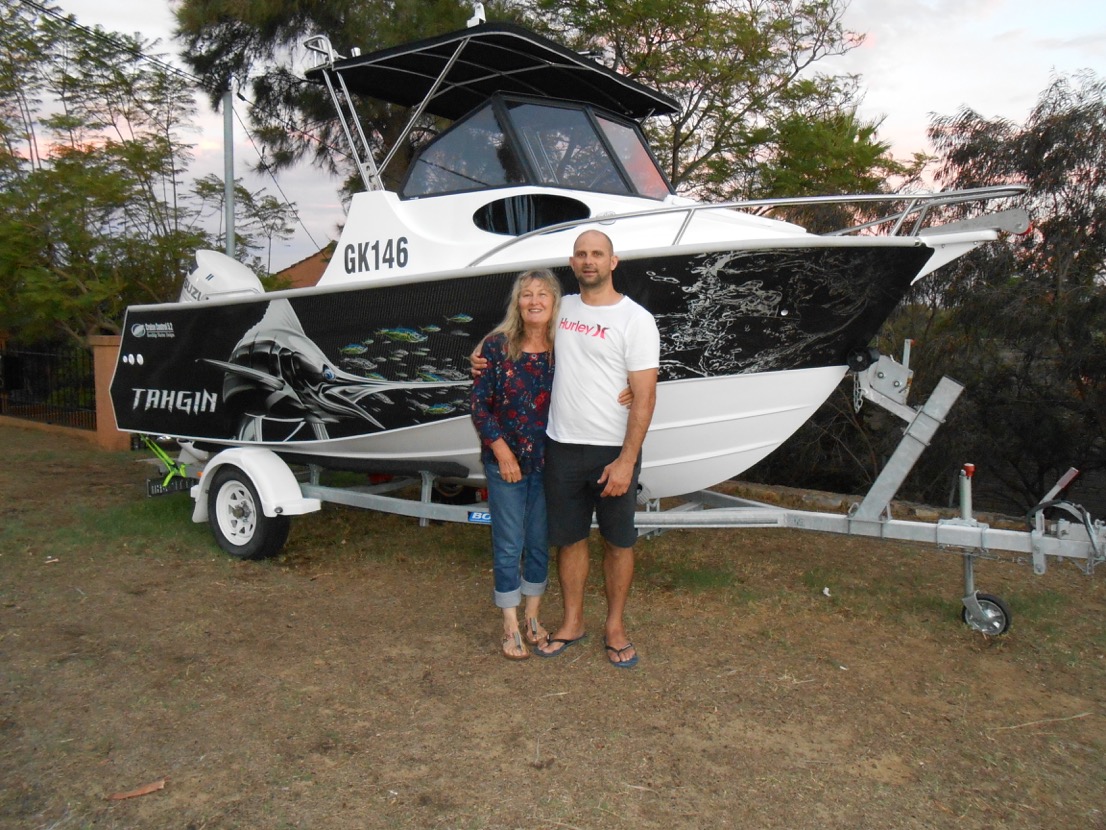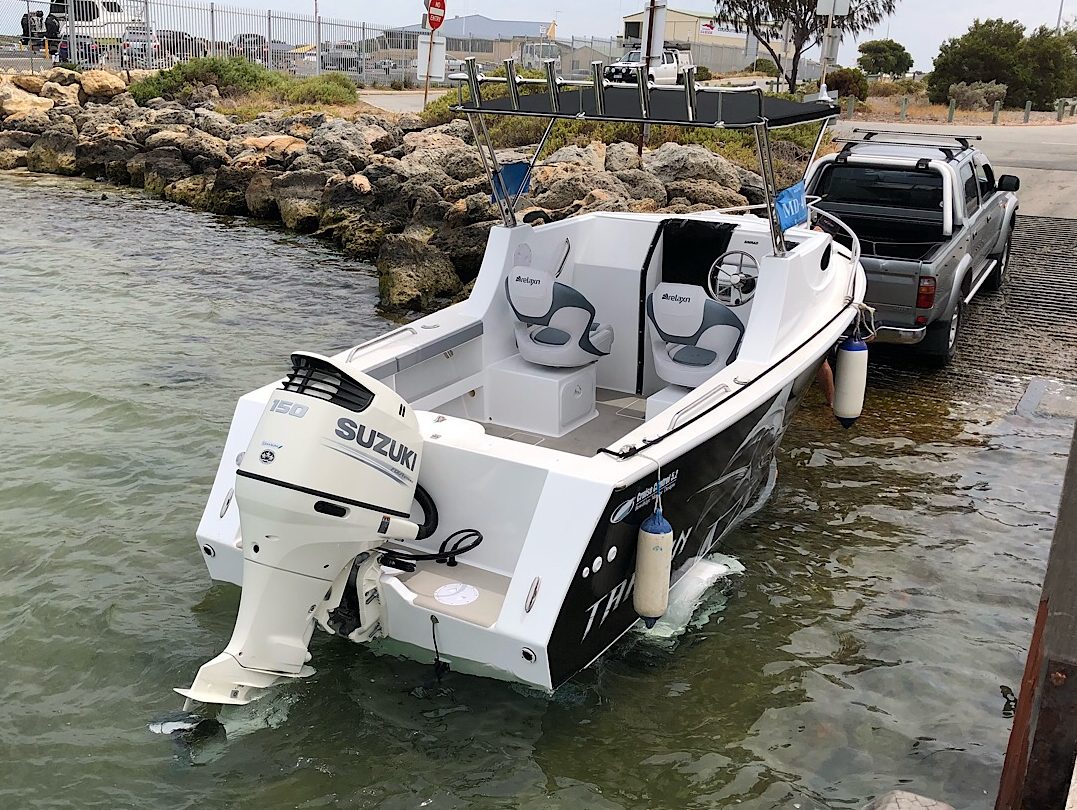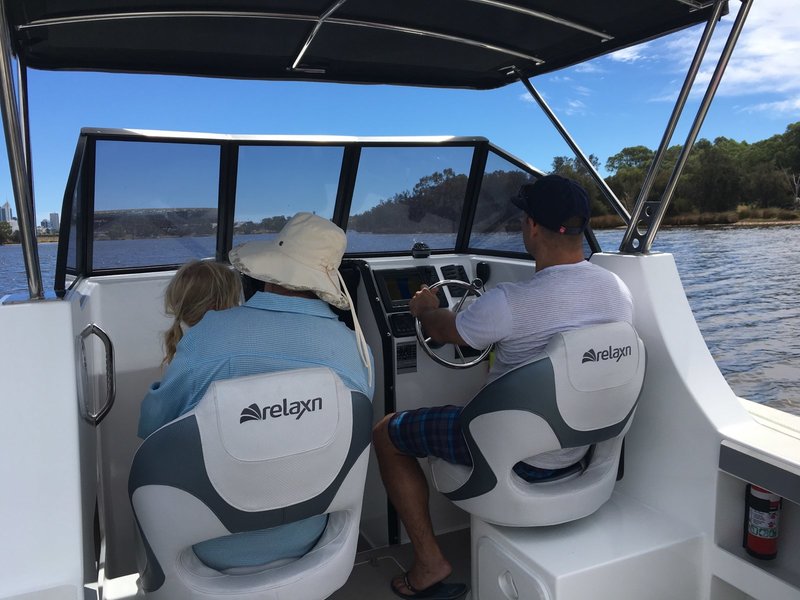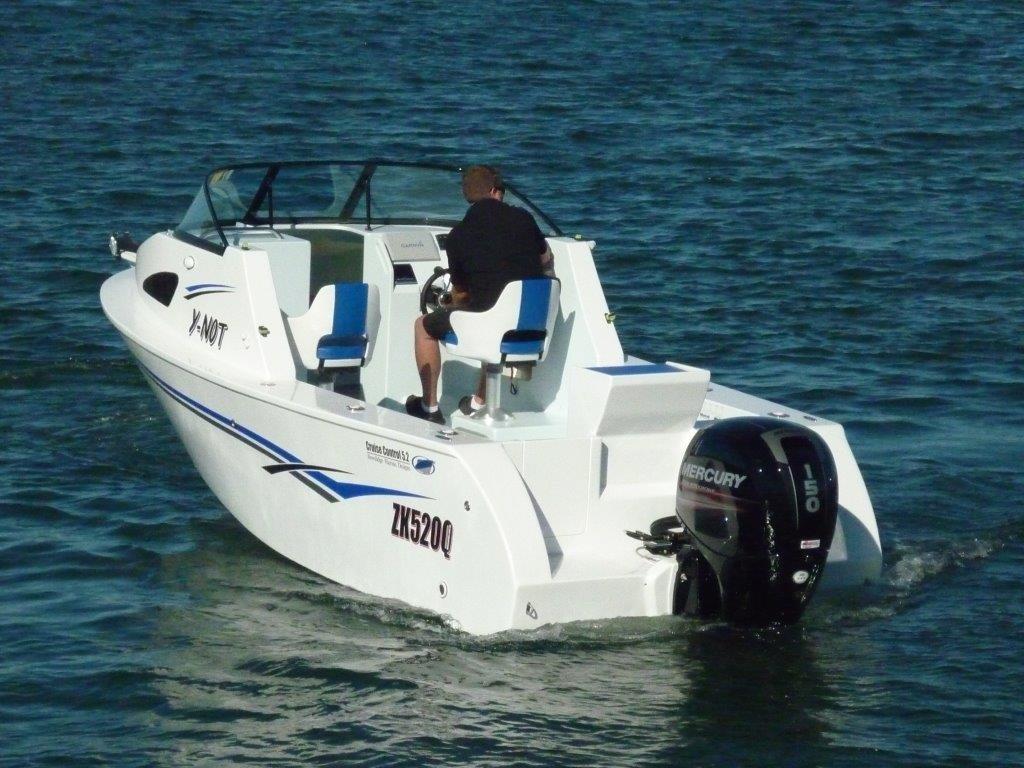Cruise Control 5.2






Cruise Control 5.2
CRUISE CONTROL 5.2
The Cruise Control 5.2 was driven by customer demand for a strong, yet a proven style fishing boat offering a true balance of beauty, hardcore fishability, weather protection, performance and comfort in an exciting offshore trailerable boating package. Featuring a 20-degree deadrise for stability combined with her deep entry, the Cruise Control 5.2 delivers a smooth ride ride through all types of seas, creating a whole new realm of possibilities for weekend adventures.
For the arrangement plan, the question most asked was;
"Could we please include a private area in regards to the toilet arrangement, not only for guests but more importantly... the opposite sex". So in this regard, we made this one of our top priority's with this design, using real walls and not flapping curtains to the outside world. Also, with her comfortable helm station & deck, rear-facing cockpit seating, cabin with private amenities and spacious multi-function storage compartments, the Cruise Control 5.2 has every amenity an active family could need. Sporting a wide array of hardcore fishing features and the strength and safety for offshore offshore capability, the Cruise Control 5.2 is a perfect combination of fishability and and most of all....family fun.
SPECIFICATIONS:
- LOA ……17ft -1" (5.2m)
- BEAM ………7ft - 9in (2.3 m) overall
- DRAFT/ hull only ………13″ (330 mm) @ DWL
- Deadrise at transom ...… 20 degrees
- FUEL CAPACITY ....... 52.8 USG (200 Litres)
Horsepower… 140-150 Hp (max)
Outboard leg length.... 25"
- LEVEL flotation (built as per the plans)
- APPROX DRY TRAILER WEIGHT including a 140 hp motor…..1276 lbs (579 kg )
depending on materials and outboard options* ( This includes a full tank of fuel)
- Construction …. Strip Plank Composite Construction
- Safety standards in compliance with the ABYC standard



Proudly Australian Designed
From the first sketch on the drafting board to the finished computer 3D modelling and CAD plans, every boat is designed in house by Mark Bowdidge (MRINA) himself.
After nearly forty years of building and designing boats, every design is specifically designed for Purpose, Performance, Seakeeping and Safety
Source: AUD @ Sat, 31 May.
CRUISE CONTROL 5.2 FEATURES
Just some of the features the Cruise Control 5.2 includes:
- Sleek yet simple and functional lines
- 20 º variable hull design offering a smooth ride in offshore or rough/white water conditions.
- All round visibility when sitting or standing
- Large cabin with heaps of headroom
- Easy access to the front of the boat
- Side pockets for all your gear plus more
- Loads of underfloor storage compartments
- Loads of fishing room in the rear cockpit
- Large 200+ litre underfloor fuel tank
- Toilet facilities within the cabin
- LEVEL flotation for compliance (we comply to the ABYC standards)
- Engineered to "Class" or Commercial shipping standards for those offroad or offshore fishing adventures.
- Easily handled by 1 person when trailering

Cruise Control 5.2 Frequently Asked Questions
What is included in the Cruise Control 5.2 Plans?
In regards to the Cruise Control 5.2 plans, it includes:
- 32 sheets in total (21 x A1 sheet size and 11 x A0 sheet size - full size bulkhead patterns)
- Full size patterns for bulkheads/ stem frame and transom
- Builders manual
- Bill of materials
- Over 150 build photo's for you to preview and assist with your build (A picture tells a thousand words" as the saying goes)
- Tip's and Tricks" e-book for building your boat
- Actual Performance results with various outboards/ props showing speed/ fuel consumption and more
- A link to our PRIVATE "How to strip plank" video
- Plus a lot more
Below is an example of the type of plans you receive

Is the Cruise Control 5.2 Builders Plate Compliant? (Australia/ USA/ Canada and the EU)
Yes.
We use the ABYC standard (https://abycinc.org/). (We do not use the AS 1799 standard, as we feel that this standard is full of "holes). Using the ABYC standard, all boats under 20ft MUST meet LEVEL flotation. It also means that the boat must meet certain stability criteria in regards to traverse stability, wind heeling criteria and max Hp allowed.
The Cruise Control 5.2, as designed exceeds the requirements for LEVEL flotation compliance. This covers the boat itself/ outboard/ people and cargo.
This standard is accepted worldwide. (Australia/ USA/ Canada and the EU)
We do not design our boats to meet BASIC flotation. To me, "Basic" flotation is dangerous.
Hope this helps

So what does the term "Strip Plank Composite" construction mean?
So… what does "Strip Plank composite" mean?
The term “composite means that if you use 2 or more materials in your construction layup, you must take into account for the mechanical properties of each material used. i.e. with the planking itself and the glass used, we have to take into account for the materials Tensile strength/ Bending strength/ compression strength/ Shear strength and Modulus of Elasticity) in your engineering calculations. With the planking itself, we need to know the "Core Shear Strength" as well. When you do this, its now called a "composite" construction.
Once it passes Tensile strength and bending strength for a particular area, we move to the next section. This method of engineering is applied throughout the whole boat.
Now… simply building a strip plank boat (in the traditional sense) and wetting out some glass on it, is not composite construction. Its just a strip plank boat with glass laid on.
All our Strip plank designs are engineered as composites and in this regard, we engineer out boats to “Class” rules. In other words, we use Commercial ship standards. Here we use ABS or the "American Bureau of Shipping (https://ww2.eagle.org/en.html)
Here’s just one small area within one of our designs (as an example), of the calcs we do with all our designs.
I hope this helps
Mark Bowdidge (MRINA)


I can't get Paulownia or WRC for strip planking. What can I use instead?
This is a question I get from time to time.
In this regard, simply send me an email, let me know what local planking timber is available and I'll do a quick number crunch to let you know whether it can be used or not and if so, what planking thickness will now be required.
Too easy
Can I get replace the plywood internal structure with foam core?
No.
By doing so, your:
1/ Making the boat too light. This means the boat will float higher in the water, exposing the chines which in turn results in the moment of inertia of the waterplane being reduced which results in an unstable boat.
2/ Taking the weight out of the bottom of the boat also raises the overall centre of gravity which further adds to an unstable rolly boat. Why? Plywood has a density of approx. 600 kgm^3, whereas foam has a density between 80-240 kg/m^3 (pending foam core used). So in effect, you've taken out between 60% to 87% of the weight that's down low. Whoops. Now you have a serious problem with stability.
3/ The boat will become too "flighty" when on the plane.
BUILD THE BOAT AS PER THE PLANS and you won't have an issue.
Can I build the boat from Foam core?
Definitely not.
See above topic "Can I replace the internal structure with foam core" except now its even worse.
BUILD AS PER THE PLANS
Do you provide CNC cut files or kits?
No I do not.
So please don't ask, as refusal may offend

To see more Cruise Control 5.2 Builders Testimonials and their boats, please click HERE




























